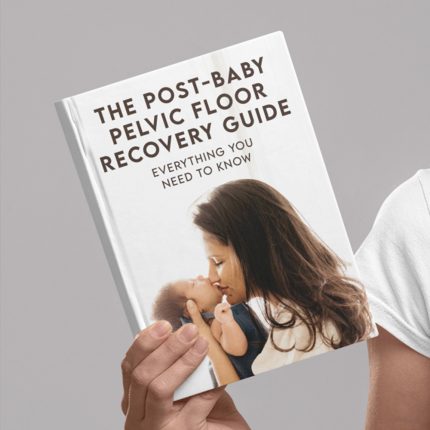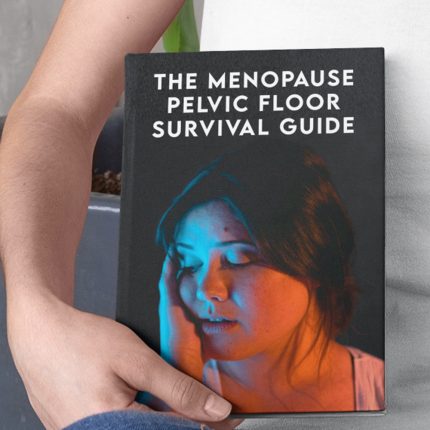Ever thought your pelvic floor could be the secret superstar behind your overall wellness? Pelvic Floor Dysfunction Therapy isn’t just another buzzword—it’s a transformative journey toward restoring strength, balance, and performance in one of your body’s most essential yet overlooked areas. Whether pelvic floor exercises have already become part of your fitness routine or you’re just learning about the connection between pelvic health and overall vitality, this guide dives deep into the what, why, and how of reclaiming your pelvic power with real talk, cutting-edge techniques, and a sprinkle of humor.
Quick Links to Useful Sections
- What Is Pelvic Floor Dysfunction and Why It Matters
- The Hidden Culprits: Common Causes and Symptoms of PFD
- Mastering Pelvic Floor Exercises: The Foundation of Therapy
- Modern Therapies in Focus: Conventional Approaches to Healing
- Pelvic Floor Physical Therapy
- Electrical Stimulation
- Complementary & Alternative Approaches: Beyond the Basics
- Acupuncture
- Chiropractic Interventions
- Massage Therapy and Myofascial Techniques
- Mind-Body Practices
- Establishing a Home Routine for Pelvic Floor Wellness
- Innovative Technologies in Pelvic Floor Therapy
- Nutrition and Lifestyle: Fueling Your Pelvic Health
- Real Stories: Transformations Through Pelvic Floor Dysfunction Therapy
- Case Study: Rediscovering Confidence in Midlife
- Testimonial: Rebuilding After Childbirth
- Journey of Resilience: Breaking the Cycle for a Busy Professional
- Creating Your Custom Pelvic Floor Dysfunction Therapy Plan
- Step 1: Get a Comprehensive Evaluation
- Step 2: Set Clear, Realistic Goals
- Step 3: Blend the Therapies
- Step 4: Build a Daily Ritual
- Step 5: Track, Tweak, and Triumph
- Resources and Community Support: Your Next Steps
- Pelvic Floor Dysfunction Therapy FAQs
- Embrace the Journey to Empowered Pelvic Health
What Is Pelvic Floor Dysfunction and Why It Matters
Pelvic floor dysfunction (PFD) happens when the muscles in your pelvic region aren’t working optimally. This can mean they’re either too tight, too weak, or coordinating in a way that leads to discomfort and frustration. It’s not just a health issue—it’s an everyday challenge that can affect bladder control, sexual health, and overall quality of life.
From occasional leaks when you laugh too hard to ongoing pelvic pain or pressure, the symptoms of PFD come as a wake-up call: your pelvic floor needs some attention. And here’s where pelvic floor dysfunction therapy comes in—it’s a multi-faceted approach aimed at diagnosing the root causes of pelvic imbalance and tailoring treatments to restore harmony. Think of it as the ultimate reboot for one of the most important core systems in your body.
In a world where sitting for hours and stress are just the norm, your pelvic floor is constantly under pressure. But no worries—it’s never too late to start a recovery journey. Whether you're a gym aficionado, a busy professional, or someone who’s just curious about better pelvic health, understanding PFD can empower you and help you make choices that support a healthier, happier life.
The Hidden Culprits: Common Causes and Symptoms of PFD
Pelvic floor dysfunction isn’t created in a vacuum. Several factors contribute to its development, and the symptoms can vary widely from one person to the next. One of the biggest culprits? Lifestyle. Years of high-impact workouts, heavy lifting, or even prolonged sitting at that desk can unfavorably impact pelvic floor strength and coordination.
Other common causes include:
- Childbirth and Pregnancy: The stretching and stress during pregnancy and labor can weaken or injure the pelvic muscles.
- Surgical Procedures: Pelvic surgeries, including hysterectomies and prostate procedures, can sometimes disrupt the normal function of the pelvic floor.
- Trauma or Injury: Accidents, falls, or sports injuries might damage the muscles, nerves, or connective tissues in the pelvic area.
- Chronic Constipation or Straining: Over time, repetitive straining can lead to tension and imbalance.
- Emotional Stress: Believe it or not, stress can make your muscles tighten up and worsen symptoms like pain or incontinence.
When it comes to symptoms, they can manifest as pelvic pain, lower back discomfort, painful intercourse, or unexpected leakage during everyday activities. For many, these challenges are not only physically restricting but also emotionally draining, affecting self-esteem and overall quality of life.
Recognizing these root causes and signs is the first step toward reclaiming control. With the right pelvic floor dysfunction therapy, you can target these issues head-on, restoring function and confidence.
EXPLORE OUR EXPERT WOMENS'S PELVIC FLOOR GUIDES WITH HIDDEN TIPS AND TRICKS
👩💻 Educational Book Store (Instant Download) 👩💻
Mastering Pelvic Floor Exercises: The Foundation of Therapy
At the heart of pelvic floor dysfunction therapy are targeted exercises designed to strengthen, relax, and balance the pelvic muscles. Pelvic floor exercises are much more than mere “Kegels”—they’re a holistic blend of active muscle training, coordination work, and relaxation techniques that support better muscle control.
The classic Kegel exercise involves contracting the muscles that control urine flow. However, a well-rounded program includes:
- Reverse Kegels: These focus on gently releasing and lengthening the pelvic muscles.
- Core Integration Routines: Pelvic floor strength is interconnected with your core, glute, and abdominal muscles. Integrated exercises work on your balance and posture, enhancing overall muscle coordination.
- Breath Coordinated Movements: Synchronizing breath with movement establishes a robust mind-body connection and helps release muscular tension.
Regular practice of these exercises not only improves urinary control and sexual function but also provides the stability needed for better posture and lower back support. The best part? You can incorporate these exercises into almost any part of your day. Whether you're waiting in line or tuning into your favorite podcast, a few targeted contractions can go a long way.
Remember, consistency is key—it's about building a routine that becomes a natural part of your lifestyle. Over time, these exercises lay the groundwork for improved pelvic health and pave the way for further integrative therapies.
Modern Therapies in Focus: Conventional Approaches to Healing
While pelvic floor exercises lay the groundwork, modern pelvic floor dysfunction therapy incorporates a range of conventional treatments that have been backed by years of clinical research. These are designed to provide immediate relief, rebuild muscle control, and address the nuanced complexities of pelvic floor health.
Here’s a look at some conventional techniques:
Pelvic Floor Physical Therapy
Pelvic floor physical therapy is a specialized framework offered by trained professionals who understand the intricate anatomy of the pelvic region. During sessions, therapists use manual techniques to assess muscle tone, pinpoint areas of tension, and develop a customized plan of action.
Manual Therapy: Techniques such as trigger point release, myofascial massage, and soft tissue mobilization relieve muscle knots and improve elasticity. This comprehensive approach is especially beneficial for those dealing with chronic pelvic pain.
Biofeedback Training: With the help of sensors and visual feedback, biofeedback allows patients to “see” their muscle activity in real time. This empowers you to precisely engage the right muscles during exercises, ensuring steady progress on your journey.
Electrical Stimulation
Electrical stimulation devices can be a helpful adjunct in therapy. By applying mild pulses of electrical current to the pelvic floor muscles, these devices help stimulate muscle contractions, strengthen weak areas, and re-establish normal function. This is particularly useful for those who find it challenging to isolate muscle groups during exercises.
These conventional treatments form the backbone of pelvic floor dysfunction therapy. They not only provide immediate symptom relief but also serve as an educational platform, allowing you to gain better control and understanding of your body.
Complementary & Alternative Approaches: Beyond the Basics
If you’re looking for a little extra magic in your healing process, complementary and alternative therapies might be your cup of herbal tea. These methods work in tandem with conventional treatments and focus on aligning the body’s natural healing pathways.
Acupuncture
Derived from ancient Chinese medicine, acupuncture involves the insertion of ultra-thin needles into specific points on the body. For pelvic floor dysfunction, acupuncture can help reduce pain, boost circulation, and enhance overall energy flow. Many patients report a deep sense of relaxation after their sessions—a perfect complement to your exercise routines.
Chiropractic Interventions
Misalignments in the spine and pelvis can create undue pressure on pelvic muscles. A skilled chiropractor can perform adjustments to relieve pressure, restore balance, and improve nerve function, all of which contribute to better pelvic function.
Massage Therapy and Myofascial Techniques
Beyond the standard massage, specialized techniques such as myofascial release target the connective tissues (fascia) that support the pelvic floor. This therapy can reduce tension, enhance flexibility, and promote better muscle coordination. A relaxed and supple muscle is far more responsive to training.
Mind-Body Practices
The stress you feel doesn’t just stay in your brain—it manifests as tension in your muscles, including those of the pelvic floor. Integrative practices such as yoga, Pilates, and guided meditation help illuminate the connection between your mind and body. Through mindfulness and controlled breathing, you can reduce stress hormones and break the vicious cycle of tension and pain.
Together, these complementary approaches round out the full spectrum of pelvic floor dysfunction therapy. They work synergistically with traditional treatments to promote not only physical healing but also mental and emotional restoration.
Establishing a Home Routine for Pelvic Floor Wellness
The journey to improved pelvic health doesn’t end when you leave the clinic—it extends into the sanctuary of your everyday life. Developing a sustainable home routine is crucial in reinforcing the positive strides made during therapy. The idea is simple: make pelvic floor exercises and mindful practices as habitual as brushing your teeth.
A robust home routine might include a blend of:
- Dedicated Exercise Sessions: Allocate 10-15 minutes each day specifically for pelvic floor exercises. Try combining traditional Kegels with reverse contractions, and don’t forget to engage your core and glutes as part of the process.
- Mindful Breathing and Meditation: Start or end your day with a few minutes of deep, diaphragmatic breathing. Apps and online videos can serve as a gentle guide until you’ve mastered the art of mindful relaxation.
- Postural Awareness: Your everyday posture—whether you’re seated at your desk or walking your dog—affects pelvic alignment. Be conscious of sitting upright and engaging your abdominal muscles to support the pelvic region.
- Incorporation of Stretching: Simple stretches that open up your hips and lower back can alleviate tension in your pelvic muscles. Incorporate yoga poses like Child’s Pose or Pigeon Pose to enhance flexibility.
Setting up an inspiring home space for these activities can turn routine into ritual. Consider a comfy corner with a yoga mat, soft lighting, and perhaps some motivation posters that remind you why you embarked on this journey. Digital reminders on your phone can also help implant these practices into your daily schedule.
Ultimately, by committing to a regular home routine, you’re investing in long-term pelvic floor health. It’s a lifestyle choice that promises rewards in both physical performance and mental clarity.
Innovative Technologies in Pelvic Floor Therapy
The digital age has ushered in many revolutionary tools, transforming pelvic floor dysfunction therapy from a trial-and-error experience into a data-driven, interactive journey. Whether you’re a tech enthusiast or simply curious about getting more precise insights, modern gadgets and apps can guide you every step of the way.
Wearable Sensors: Advanced wearable devices now track muscle activity in real time. Paired with smartphone apps, they provide instant feedback on whether you’re activating the right muscles during each exercise session. This real-time data not only helps improve form but also boosts motivation as you visualize progress over time.
Interactive Pelvic Floor Trainers: These innovative tools combine biofeedback with gamification. By turning routine exercises into an interactive experience, they make training more engaging and effective. Imagine leveling up your pelvic health like a video game—what a cool way to make tough exercises fun!
Telehealth and Virtual Physical Therapy: For those who prefer working out in the privacy and comfort of home, telehealth services have made it possible to connect with pelvic floor specialists online. Virtual sessions allow for real-time coaching, personalized exercise adjustments, and the convenience of professional guidance without leaving your living room.
The integration of technology into pelvic floor dysfunction therapy is more than just a trend—it's a powerful ally in your journey to better health, offering convenience, engagement, and precision in every step.
Nutrition and Lifestyle: Fueling Your Pelvic Health
There’s an old adage: “You are what you eat.” Now, imagine that your pelvic floor is holding up the fort of your overall health—it deserves a first-class fuel. Integrating a nutrient-dense diet and smart lifestyle choices into your routine is an essential part of pelvic floor dysfunction therapy.
Anti-Inflammatory Foods: Incorporate a rainbow of fruits and vegetables into your diet. Foods rich in antioxidants, like berries, leafy greens, and nuts, combat chronic inflammation and support tissue repair. Crunch on some walnuts, add avocado to your salad, or blend a green smoothie for an extra boost.
Lean Proteins: Proteins are the building blocks of muscle tissue. From lean meats to plant-based options like tofu, legumes, or quinoa, ensure your body gets the amino acids it needs to repair and rebuild your pelvic floor muscles.
Hydration: Never underestimate the power of water. Adequate hydration maintains muscle elasticity, improves circulation, and keeps everything functioning smoothly. Aim for at least 8 glasses a day—or more if you’re active.
Mindful Lifestyle Choices: Quality sleep (7-9 hours per night) and conscious stress management are pivotal for overall well-being. Getting sufficient rest helps your body repair itself, while mindfulness practices ease tension and promote holistic balance. Taking regular breaks, practicing gratitude, or simply disconnecting from digital distractions can boost both your mood and pelvic health.
Aligning your diet and lifestyle with your therapeutic regimen creates a powerhouse synergy that promotes healing from the inside out. Embrace the holistic philosophy—when your body is nourished and rested, every muscle, including the pelvic floor, thrives.
Real Stories: Transformations Through Pelvic Floor Dysfunction Therapy
Sometimes, the best way to see the potential in a treatment is through real-life transformations. Across the spectrum of age, gender, and background, countless individuals have experienced breakthroughs by integrating pelvic floor dysfunction therapy into their lives.
Case Study: Rediscovering Confidence in Midlife
Meet Sarah, a vibrant woman in her early 40s who was frustrated with unexpected leaks and pelvic discomfort. Embarking on a journey that combined pelvic floor exercises, biofeedback sessions, and yoga, she reclaimed not only her physical strength but also her self-confidence. Within months, Sarah’s routine had become a celebration of progress—each session empowering her to face daily challenges with renewed energy and joy.
Testimonial: Rebuilding After Childbirth
After giving birth to her second child, Emily underwent significant pelvic floor strain. With guidance from a pelvic floor specialist, she learned targeted exercises, incorporated mindfulness practices, and even explored acupuncture. Her journey wasn’t just about recovery—it was a rediscovery of her body’s resilience and the joy in motherhood that had been overshadowed by physical discomfort.
Journey of Resilience: Breaking the Cycle for a Busy Professional
David, a 35-year-old tech entrepreneur, was no stranger to long hours and persistent stress. His hectic schedule led to a gradual decline in pelvic health, manifesting as discomfort and diminished core strength. Through a digital health program that merged virtual physical therapy with wearable biofeedback and stress-relief techniques, David managed to reverse the trend. Today, he credits his newfound energy, improved focus, and better work-life balance to the tailored pelvic floor dysfunction therapy program he embraced.
These stories remind us that every journey is unique—yet at its core, the challenge of pelvic floor dysfunction can be overcome with the right blend of science, dedication, and a pinch of humor. They serve as beacons for anyone ready to reclaim their pelvic health.
Creating Your Custom Pelvic Floor Dysfunction Therapy Plan
There isn’t a one-size-fits-all solution when it comes to pelvic floor dysfunction therapy. That’s why crafting a personalized plan is your best bet toward long-term success. The process is dynamic, evolving with your progress and specific needs.
Step 1: Get a Comprehensive Evaluation
Start by consulting a pelvic floor specialist who can evaluate both your physical and lifestyle factors. An in-depth assessment not only highlights existing issues but also sets the stage for a tailored treatment plan.
Step 2: Set Clear, Realistic Goals
Define your objectives, whether they’re improving bladder control, reducing pelvic pain, or boosting your overall core strength. Small, measurable milestones will help you stay motivated and allow you to celebrate every victory along the way.
Step 3: Blend the Therapies
A holistic approach often works best. Combine conventional treatments—like physical therapy and biofeedback—with complementary practices such as yoga, acupuncture, and mindfulness exercises. Integrating these methods ensures that both your physical symptoms and emotional well-being are nurtured.
Step 4: Build a Daily Ritual
Carve out specific times each day for your therapy regimen. Whether it’s a quick 10-minute exercise session in the morning or a guided meditation before bed, consistency is the secret sauce that transforms effort into progress.
Step 5: Track, Tweak, and Triumph
Keep a simple journal or use an app to monitor your progress. Document what works, how you feel, and any adjustments needed. Regular reviews with your healthcare provider can fine-tune your approach and keep you on the path to peak pelvic performance.
Your personalized pelvic floor dysfunction therapy plan is not static—it evolves as you regain strength, flexibility, and confidence. Embrace the process, celebrate the little wins, and get ready to see transformative results.
Resources and Community Support: Your Next Steps
Venturing into pelvic floor dysfunction therapy is as much about community support as it is about individual effort. Numerous resources, both online and offline, can help you stay informed, motivated, and connected with experts and peers who share your journey.
Online Communities and Forums: Platforms like Reddit, specialized Facebook groups, and dedicated wellness websites provide supportive spaces where people share success stories, advice, and tips. Engaging with these communities can be a game-changer—it’s like having a digital support group that cheers you on every step of the way.
Workshops and Webinars: Many pelvic floor specialists and wellness influencers host virtual workshops that focus on exercises, mindfulness practices, and nutrition tips aimed at enhancing pelvic floor health. These sessions are often interactive and offer personalized Q&A segments to address your specific concerns.
Professional Support: It might be time to consider seeing a pelvic floor physical therapist or a holistic health coach. These professionals can evaluate your situation and create a tailored program to get you back on track. Whether it’s one-on-one advice or group sessions, professional support offers guidance based on evidence and experience.
Books and Articles: Knowledge is empowering. Jump into a good book or a trusted website that demystifies pelvic floor dysfunction and offers tips, exercises, and real-life success stories. The more you learn, the better equipped you are to take charge of your health.
Your next steps are all about staying informed and connected. Use these resources to build a robust network around your wellbeing, and remember—every positive change you make is a step toward empowered, holistic pelvic health.
Pelvic Floor Dysfunction Therapy FAQs
Curious about the nitty-gritty details of pelvic floor dysfunction therapy? Check out these frequently asked questions that dive into everything from the basics to the more advanced integration methods.
1. What exactly is pelvic floor dysfunction therapy?
Pelvic floor dysfunction therapy is a comprehensive approach that combines targeted exercises, conventional physical therapy, and complementary practices like mindfulness and holistic nutrition to restore and maintain optimal pelvic floor function.
2. Who can benefit from pelvic floor dysfunction therapy?
Anyone experiencing issues such as urinary incontinence, pelvic pain, or muscular imbalance may benefit. This therapy is especially helpful for postpartum individuals, those recovering from pelvic surgeries, and anyone dealing with chronic pelvic tension.
3. Are pelvic floor exercises only for women?
Absolutely not! Pelvic floor dysfunction therapy is applicable to everyone, regardless of gender. Men, too, can experience issues like pelvic pain and incontinence, and targeted exercises can provide relief.
4. How long before I see improvements?
Healing timelines vary among individuals. While some might notice improvements within a few weeks of consistent effort, others may take a few months to achieve significant changes. The key is persistence and regular practice.
5. Can technology really help with pelvic floor training?
Yes, innovations like wearable sensors and interactive biofeedback devices can offer real-time insights into muscle activity and help refine your exercise technique, making your therapy more efficient.
6. What role does lifestyle play in pelvic floor health?
A major one! Incorporating a balanced diet, proper hydration, stress management, and quality sleep amplifies the benefits of your therapeutic exercises and creates an optimal environment for healing.
7. Is pelvic floor dysfunction common?
Yes, it’s more common than you might think. Factors like lifestyle, childbirth, and even chronic stress contribute to its prevalence. Recognizing the signs early on is key to effective management.
8. How do I know if I need conventional or complementary therapies?
A comprehensive evaluation by a pelvic floor specialist can steer you toward a personalized plan that often involves a mix of both. It's all about balancing immediate relief with long-term wellness.
9. Can I practice pelvic floor exercises on my own?
Yes, many exercises can be done independently. However, a consultation with a specialist ensures that you’re performing them correctly and safely.
10. Where can I learn more about pelvic floor dysfunction therapy?
Resources abound—from online communities and webinars to professional consultations and educational articles. The more you immerse yourself in the topic, the better equipped you’ll be to create your personalized healing plan.
Embrace the Journey to Empowered Pelvic Health
Pelvic floor dysfunction therapy is more than just a series of exercises—it’s a pathway to reclaiming an essential part of your well-being. Throughout this guide, we’ve explored the ins and outs of PFD: from understanding what it is, identifying the root causes, and mastering the exercises, to harnessing cutting-edge technologies and integrative approaches that speak to both your physical and mental health.
Embrace each step of your personalized plan with a spirit of resilience and openness. The journey might have its challenges, but each session, each breath, and each moment of mindfulness is a victory in the quest for holistic pelvic health. Whether you’re just starting out or have been on this path for a while, remember that every effort counts—transforming discomfort into strength, and uncertainty into empowerment.
Let your journey be defined not by setbacks but by the victories you achieve through persistent effort, informed choices, and the synergy of modern science with ancient wisdom. There’s no better time than now to start nurturing your pelvic floor, boosting your confidence, and improving your quality of life with every mindful action.
Your new chapter in pelvic floor dysfunction therapy is waiting for you. Embrace the transformative power of these techniques, celebrate your progress, and connect with the community of like-minded individuals ready to support you along the way. Here’s to empowered, resilient, and vibrant pelvic health!
Curious About Your Pelvic Floor? Explore our curated collection of insightful articles to learn more and take charge of your health.
- Pelvic Floor Basics
- Pelvic Floor Exercises & Workouts
- Pelvic Floor Kegel Exercises: Techniques & Benefits
- Advanced Pelvic Floor Workouts
- Pre/Post-Natal Pelvic Floor Routines
- Pelvic Floor Exercises for Men
- Pelvic Floor Therapy Techniques
- At-home vs Professional Pelvic Floor Therapy Options
- Diet & Lifestyle for a Healthy Pelvic Floor
- Pelvic Floor Health & Wellness
- Specialized Pelvic Floor Conditions & Treatments
Now back to the main article!






















